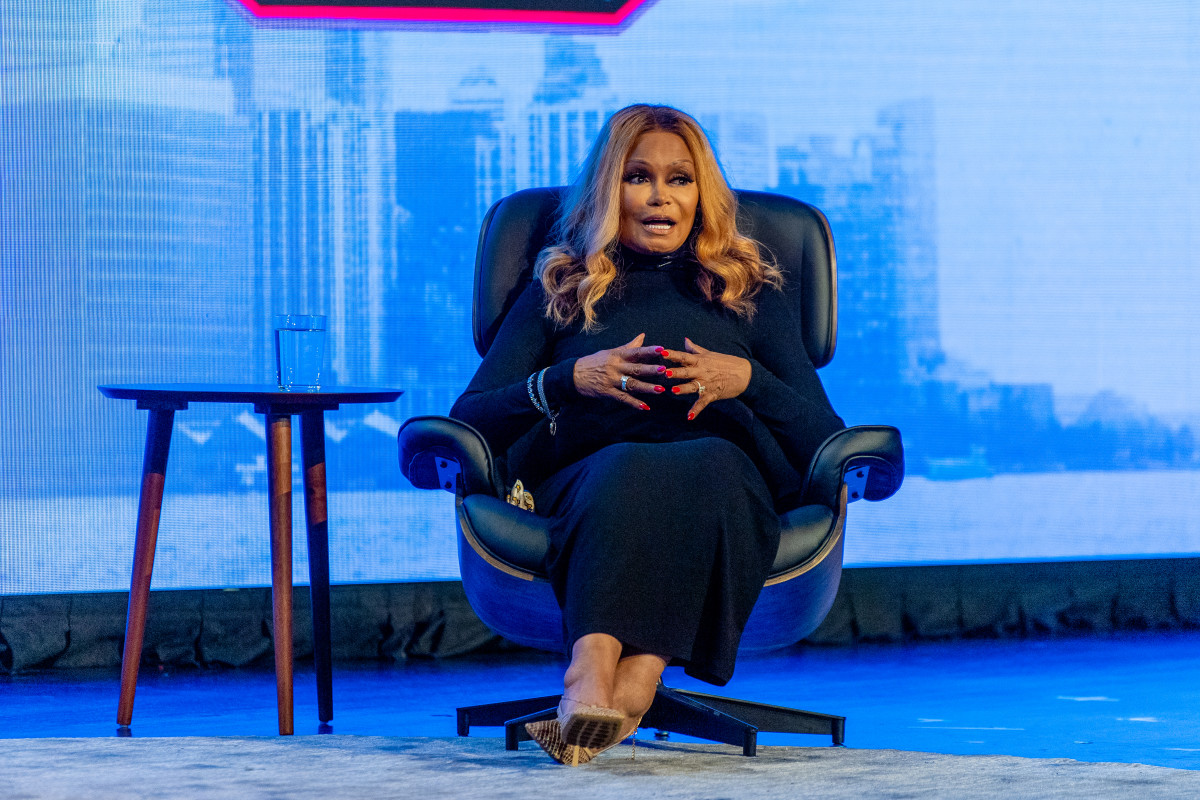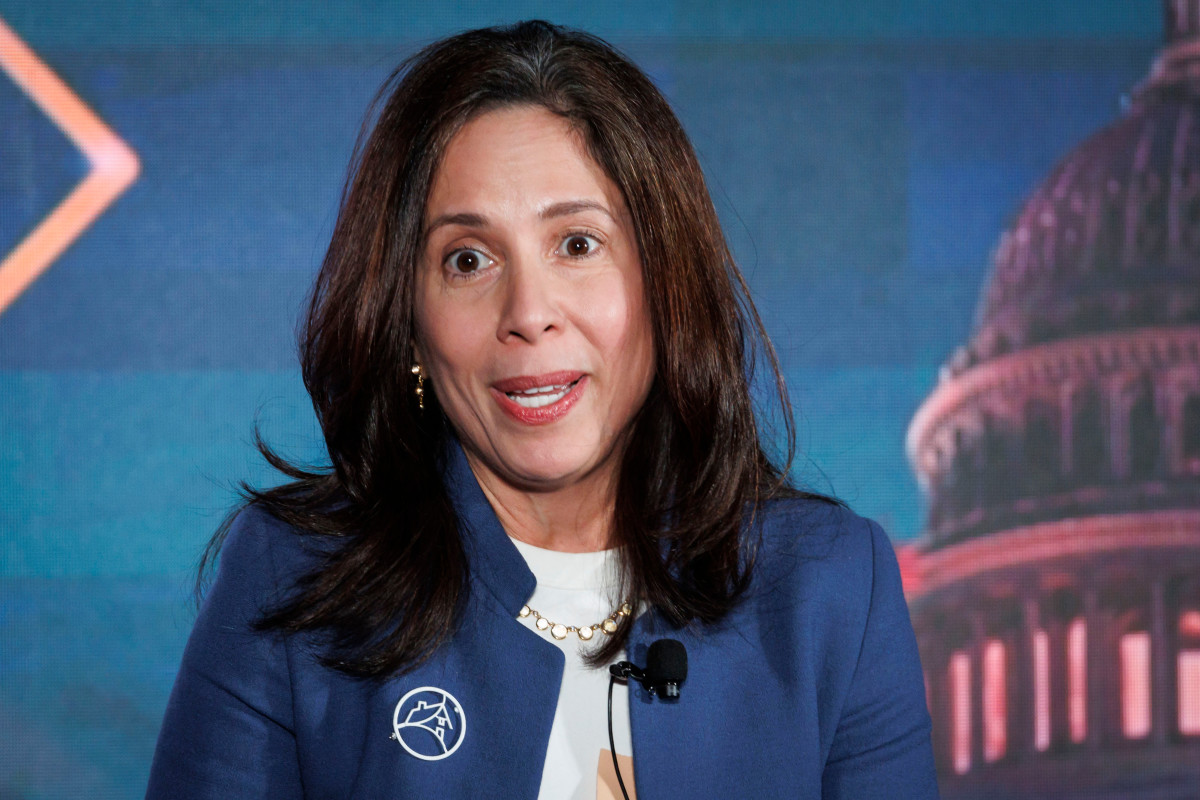
Roy Rochlin/Getty Images
2023 was a milestone year for women in business, as women gained more “seats at the table” at every level of the workforce, from an increase in the number of female CEOs at Fortune 500 companies to a surge in female entrepreneurship in the aftermath of the Covid-19 pandemic. Women-led enterprises account for 42% of all businesses in America as of early 2024 — that’s more than double the number in the early 2000s.
Studies have shown that women build businesses that outperform those of their male counterparts, generating higher revenues and creating more jobs. Although they receive less startup funding, women-led businesses prove to be more valuable over time — even their investment portfolios generate better risk-adjusted returns than men’s. But much work remains in order for women to achieve parity in business once and for all.
Critical steps include closing the pay gap across the employment spectrum, securing equal rates of venture capital funding for female entrepreneurs, and creating greater levels of C-suite inclusivity for minority women business leaders.
Now’s the perfect time to do it.

Ting Shen/Bloomberg via Getty Images
Advances at the top: more female CEOs than ever before
In 2023, the number of Fortune 500 companies helmed by women surpassed the double digits for the first time ever. This was an important milestone since the Fortune 500 represents the largest American companies, public and private, ranked by revenues.
In 2023, for example, Fortune 500 companies earned a total of $18.2 trillion, making up more than half of U.S. GDP. That means that not only are these businesses big — their executive officers are also very powerful.
According to Fortune, in 2023, 52 CEOs, or 10.4% of the Fortune 500, were female, marking quite an advancement from even a few years ago. In 2015, The New York Times published a story that took an in-depth look at the CEOs of S&P 1500 firms (a similar ranking to Fortune’s list, although the S&P categorizes its businesses by market cap instead of revenues). The New York Times discovered that for every woman CEO on the list of S&P 1500 companies, there were four male CEOs named John.
This was incongruent with society at large, since people with the name “John” accounted for less than 4% of the total population, while women made up 50%, thus reflecting the inequality that women faced — particularly at the executive level.
The New York Times applied this metric, dubbed the “Glass Ceiling Index,” to other sectors, and found that women leaders fared better in academia, on corporate boards, and even in the U.S Congress than they did as chief executive officers.
That’s why it’s so groundbreaking to see so many big-name companies currently led by women, like Karen Lynch of CVS Health, Mary T. Barra of General Motors, and Priscilla Almodovar of Fannie Mae. According to Forbes, women saw a 1% gain in leadership positions globally since 2015, while in the U.S., women added eight spots, or nearly 2%, to the Fortune 500 list between 2022 and 2023. This accounted for the largest total number of women-led Fortune 500 businesses since the magazine began publishing its list in 1955.
Still, while double-digit CEO representation may seem impressive, it also means that women are only leading 52 out of America’s 500 biggest companies …
But at least they now outnumber the men named John.
List of female CEOs on the 2023 Fortune 500
| Fortune 500 rank | Company | Name | Start date |
|---|---|---|---|
6 |
CVS Health |
Karen S. Lynch |
Feb. 2021 |
21 |
General Motors |
Mary T. Barra |
Jan. 2014 |
22 |
Anthem |
Gail K. Boudreaux |
Nov. 2017 |
25 |
Centene |
Sarah London |
Mar. 2022 |
27 |
Walgreens Boots Alliance |
Roz Brewer |
Mar. 2021 |
28 |
Fannie Mae |
Priscilla Almodovar |
Dec. 2022 |
36 |
Citigroup |
Jane Fraser |
Feb. 2021 |
37 |
United Parcel Service |
Carol B. Tome |
Jun. 2020 |
88 |
Progressive |
Susan Patricia Griffith |
Jul. 2016 |
94 |
Best Buy |
Corie S. Barry |
Jun. 2019 |
101 |
Oracle |
Safra A. Catz |
Sep. 2014 |
103 |
TIAA |
Thasunda Brown Duckett |
May. 2021 |
105 |
General Dynamics |
Phebe N. Novakovic |
Jan. 2013 |
110 |
Occidental Petroleum |
Vicki A. Hollub |
Apr. 2016 |
113 |
Northrop Grumman |
Kathy J. Warden |
Jan. 2019 |
141 |
Duke Energy |
Lynn J. Good |
Jul. 2013 |
146 |
Cummins |
Jennifer Rumsey |
Aug. 2022 |
161 |
Rite Aid |
Elizabeth Burr |
Jan. 2023 |
166 |
CDW |
Christine A. Leahy |
Jan. 2019 |
167 |
Advanced Micro Devices |
Lisa T. Su |
Aug. 2014 |
180 |
PG&E |
Patricia K. Poppe |
Jan. 2021 |
205 |
American Electric Power |
Julia A. Sloat |
Jan. 2023 |
213 |
Land O'Lakes |
Beth E. Ford |
Aug. 2018 |
222 |
Lincoln National |
Ellen G. Cooper |
May. 2022 |
223 |
Ross Stores |
Barbara Rentler |
Jun. 2014 |
237 |
Lumen Technologies |
Kathleen E. Johnson |
Nov. 2022 |
247 |
Reliance Steel & Aluminum |
Karla R. Lewis |
Jan. 2023 |
251 |
Automatic Data Processing |
Maria Black |
Jan. 2023 |
257 |
Reinsurance Group of America |
Anna Manning |
Jan. 2017 |
261 |
Parker-Hannifin |
Jennifer A. Parmentier |
Jan. 2023 |
266 |
Opendoor Technologies |
Carrie Wheeler |
Dec. 2022 |
282 |
Jackson Financial |
Lura L. Prieskorn |
Feb. 2021 |
283 |
Fidelity National Information Service |
Stephanie L. Ferris |
Jan. 2023 |
306 |
Otis Worldwide |
Judith F. Marks |
Apr. 2020 |
333 |
Jones Financial (Edward Jones) |
Penny Pennington |
Jan. 2019 |
334 |
Dick's Sporting Goods |
Lauren R. Hobart |
Feb. 2021 |
378 |
Graybar Electric |
Kathleen M. Mazzarella |
Jun. 2012 |
379 |
Insight Enterprises |
Joyce A. Mullen |
Dec. 2021 |
380 |
Hershey |
Michele G. Buck |
Mar. 2017 |
396 |
Celanese |
Lori J. Ryerkerk |
May. 2019 |
405 |
Yum China Holdings |
Joey Wat |
Mar. 2018 |
412 |
Thrivent Financial for Lutherans |
Teresa J. Rasmussen |
Oct. 2018 |
427 |
Vertex Pharmaceuticals |
Reshman Kewalramani |
Apr. 2020 |
428 |
Commercial Metals |
Barbara R. Smith |
Jan. 2017 |
432 |
Foot Locker |
Mary N. Dillon |
Sep. 2022 |
437 |
Williams-Sonoma |
Laura J. Alber |
May. 2010 |
456 |
Franklin Resources |
Jennifer M. Johnson |
Feb. 2020 |
457 |
Taylor Morrison Home |
Sheryl D. Parlmer |
Nov. 2012 |
463 |
Zoetis |
Kristin C. Peck |
Jan. 2020 |
472 |
Bed Bath & Beyond |
Sue Gove |
Jun. 2022 |
479 |
Science Applications International |
Nazzic S. Keene |
Jul. 2019 |
482 |
Bath & Body Works |
Gina R. Boswell |
Dec. 2022 |
The rise of female entrepreneurs: Resilience through change
Women haven’t witnessed newfound success solely atop the corporate ladder. Small businesses, once a male-dominated domain, are now nearly equally led by women, as economic changes have compelled more and more women to become entrepreneurs.
Back in 1972, women-run businesses made up just 4.6% of the economy, but by 2014, this number had grown to 21%. During the longest bull market in history, in 2019, the number of women-owned small businesses expanded even further, growing another 21% to 12.9 million. This meant that 42% of all small businesses in the U.S. were now owned and managed by a woman, and The World Bank estimated that female-led small businesses added as much as $3 trillion and 23 million jobs to the U.S. economy.
The Covid-19 pandemic presented challenges to every facet of American life, and women in particular felt the heat. According to the U.S. Department of Labor, unemployment levels for women peaked at 15.5% in April 2020, which was 0.6% higher than the national average of 14.9%.
Pivoting to meet their financial needs, many of the women who lost their jobs during the pandemic decided to start new businesses. According to Gusto, a global payroll software company, there was a surge in female-led new business growth starting in 2020.
Women made up nearly half (47%) of all new business owners in 2020, and the trend continued through the following years: 49% of all new businesses were started by women in 2021, and 47% in 2022, with most of these businesses being focused in the healthcare, education, and nonprofit sectors.
Entrepreneurship allowed women the autonomy they needed to adapt to changing times, as well as enjoy the benefits of self-employment, like working from home and hybrid schedules, which gave them the flexibility they needed to meet increased childcare responsibilities — which, according to Gusto, was the number one reason they started their own business.
Some of the best-known and most successful modern female entrepreneurs include:
- Oprah Winfrey, one of the biggest media moguls in history, who has an estimated net worth of $2.9 billion
- Sheryl Sandberg, former COO of Meta Platforms and founder of LeanIn.org, a nonprofit centered around female empowerment, whose net worth is estimated to be around $1.8 billion
- Sara Blakely, the founder of Spanx shapewear company, whose net worth is $1.3 billion
- Tory Burch, the creator of a popular and eponymous fashion brand, whose net worth is around $1.2 billion
- Janice Bryant Howroyd, the founder of the global staffing empire ACT-1, which is worth around $1.1 billion

Universal History Archive/Universal Images Group via Getty Images
Unfinished business: A short history of women and work in the U.S.
Women make up a critical part of the U.S. economy — according to the U.S. Department of Labor, women represented 46.8% of the workforce in 2023, or 76.6 million workers, but it wasn’t always this way. In a blog post for the Brookings Institution, U.S. Secretary of the Treasury Janet Yellen discussed the advancements women workers have made — and their strides yet to come.
Nineteenth-century sensibilities placed women and men in “separate spheres,” Yellen wrote. Women received little education and were mainly relegated to raising families and maintaining the home, although that often included taking care of the family business. If women were the sole providers and needed gainful employment, their only acceptable occupations were as domestics or in factories — often working for little pay and under dangerous conditions.
After the passage of the 19th Amendment on August 26, 1920, which gave women the right to vote, more women graduated high school and entered the workforce in greater numbers, taking jobs as secretaries, teachers, and child care workers. World War II created new opportunities for women, as departing soldiers left vacancies in the machinery and aircraft industries, as well as in construction, at hospitals, and in offices.
By 1970, half of the workforce was female, and women demanded — and received — greater protections in the workplace, such as the Pregnancy Discrimination Act of 1978. Regulations from the Equal Employment Opportunity Commission also defined and prohibited the practice of sexual harassment in 1980.
Under the Equal Pay Act of 1963, it became illegal to pay men and women separate wages based on sex. That year, the “gender wage gap,” or disparity in pay between men and women, was 41 cents, meaning that for every dollar men earned, women made just 59 cents.
Fast forward to 2023, on the 60th anniversary of the Equal Pay Act, a report from the White House illustrated how the wage gap has shrunk, although it still persists. Women now make 83 cents for every dollar made by a man. This gap is even wider for minority women and older female workers.
Challenges facing women in business: “Headwinds to success”
Wage disparity continues to be the greatest challenge facing women in business today — and while researchers have spilled much ink trying to explain why it still exists, The Department of Labor cites the overrepresentation of women workers in lower-paying industries, such as child care, and underrepresentation in higher-paying industries, like finance, as one factor.
Other factors include the prevalence of women leaving the workforce to take on caregiving roles, be it raising children or taking care of aging parents, and the fact that women are more likely to accept lower-paying jobs with fewer benefits than men.
Race and ethnicity also factor into the wage gap — not just in corporate America, but also globally. In a USA Today survey of S&P 100 businesses, which represent the 100 top publicly traded companies in the world, few women held executive positions — and fewer still were women of color. Out of the 533 executive officers at these publicly traded companies, 73 were white women, nine were Asian women, five were Black women, and just two were Latina.
Yet initiatives aimed at increasing diversity in business have recently come under fire. In 2023, an anti-affirmative action group called the American Alliance for Equal Rights sued Atlanta’s Fearless Fund, which had offered grants of up to $20,000 to small, Black women-led businesses in the Atlanta area.
The American Alliance for Equal Rights claimed that diversity, equity, and inclusion (DEI) grants violated federal civil rights law because whites could not apply. That September, a federal court ruled in favor of Fearless Fund, yet by October, Georgia’s 11th Circuit Court of Appeals had overturned the ruling. This followed a July 2023 ruling by the U.S. Supreme Court that eliminated affirmative action, or race-conscious admissions practices at U.S. colleges, and set a precedent for ending DEI initiatives in other sectors, like corporate America.
Women entrepreneurs have also experienced an earnings gap — but for them it comes in the form of startup investments. Boston Consulting Group (BCG) estimates that women business owners receive an average of $1 million less in startup capital than men. It studied over 1,500 businesses included in the MassChallenge small business accelerator program, and while women represented 42% of the businesses within the program, they only received an average of $935,000 in seed funding, while male-led businesses received an average of $2.1 million.
The reasons behind the disparity? BCG discovered that during pitch meetings, women made more conservative projections than men and asked for fewer capital dollars. Investors surveyed admitted that they were less likely to believe that women had the technical knowledge to achieve their stated objectives, thus perpetuating gender biases.
Astoundingly, although they received less seed funding, the women-led businesses were able to generate a greater return on investment than their male cohorts, generating 78 cents of revenue per dollar invested compared to male-founded startups, which came in at just 31 cents.
It’s time we overcome the gender stereotypes and unconscious biases that hinder advancement opportunities for women in business, once and for all.
Charting a new course: opportunities for women in business
Women in business must, through active participation, education, and dialogue, continue to reveal the structural biases in corporate America in order to create solutions that overcome them.
Businesses through every rank of the American workforce can build a future that includes opportunities for everyone by prioritizing efforts geared towards diversity and inclusion.
Women business leaders should view their networks as strategic support systems for shared unity, information, and resources on how to build a more inclusive work environment and mentor younger women so they have the skills and education they need to achieve more equitable opportunities. Including other women in this battle is critical, as they are often seen as their own best advocates to initiate reforms on issues like wage equity and paid leave.
At this time, the U.S. government continues to offer an array of funding opportunities and training resources for women, like the FARE program, which offers grants to underserved women who have been the victims of harassment, and WANTO grants, which train women for jobs traditionally held by men.
Venture capitalists and angel investors should make sure their funding dollars go to a balanced pool of startups that are fairly represented by women.
The good news is that the future for women in business doesn’t seem as bleak as it once did. Progress has already been made, and more women than ever have gained a seat at the proverbial “table.”
Now the question is, can we build a better table for everyone to sit at?







